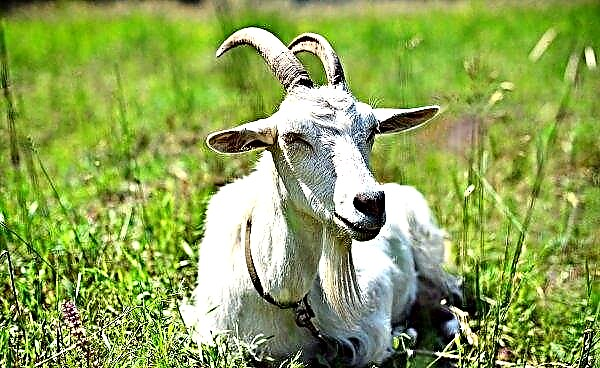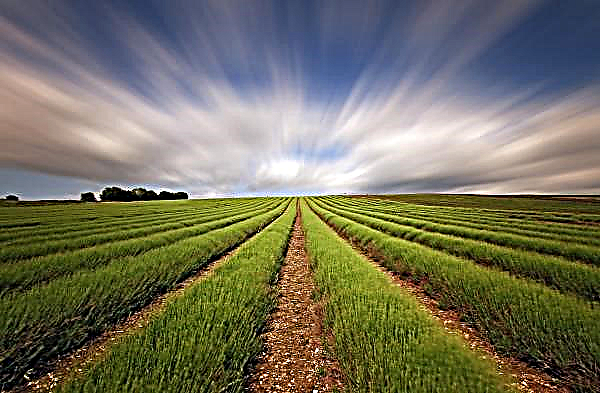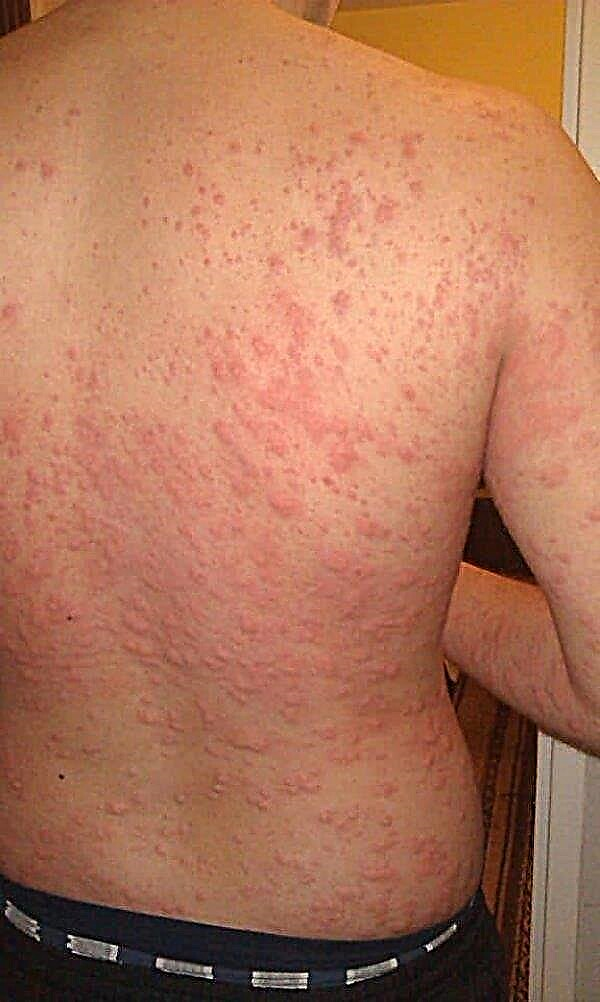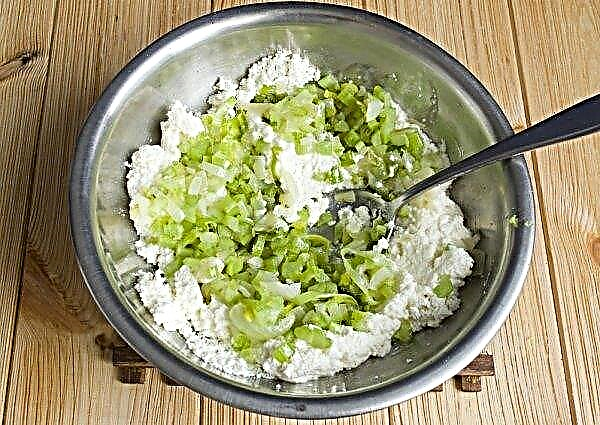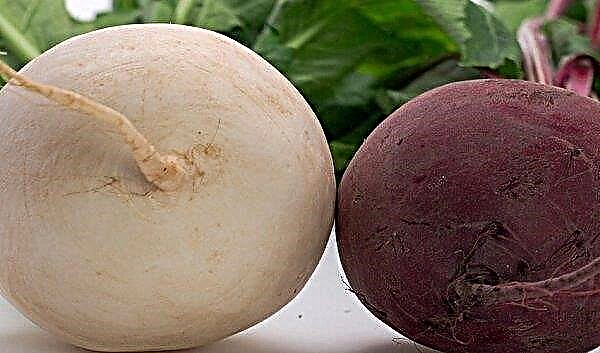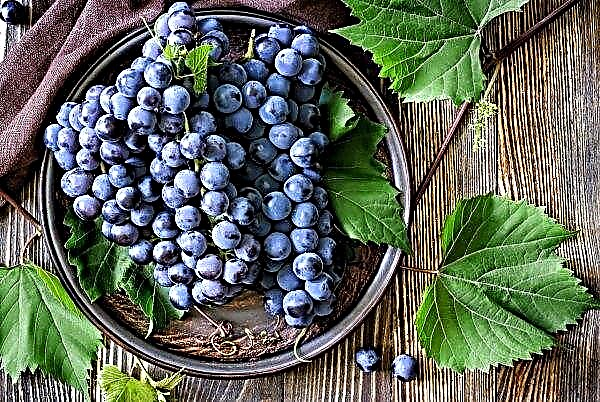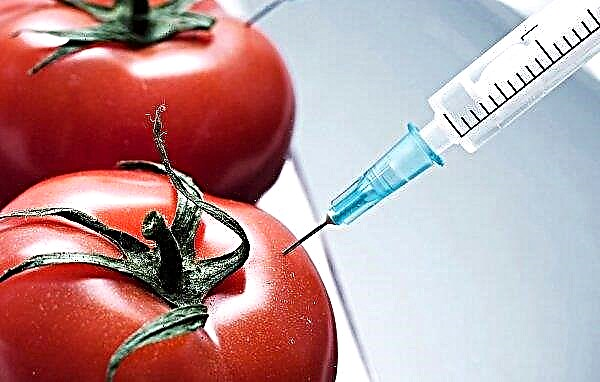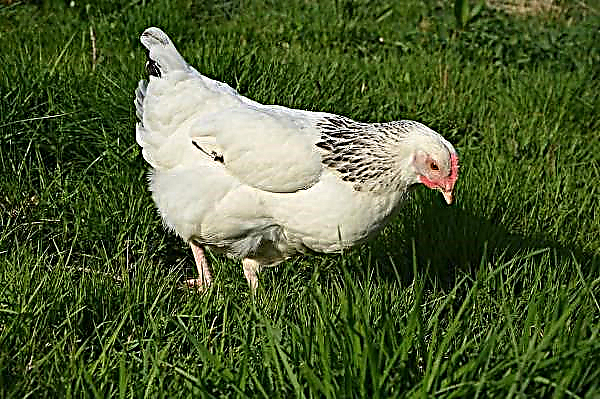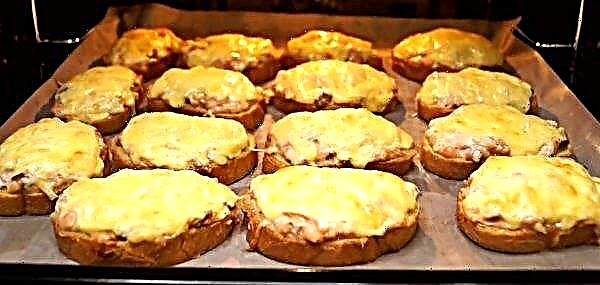Poinsettia is an indoor flower that pleases with its spectacular flowering in the winter. Her brightly colored bracts form beautiful stellate outlines. Since it blooms for Christmas, the plant has come to be called the "Christmas star." We learn what poinsettia is, how to establish proper care for it and propagate it, as well as what difficulties you may encounter when growing it.
Botanical description of the plant
Poinsettia is an evergreen shrub that reaches three meters in natural conditions for it. In indoor conditions, this plant has more modest sizes, since hybrids have already been bred that grow upward by no more than 30 cm.
The leaves have a dark green color and are attached with petioles to a simple branching stem. They have the shape of an oblong oval with a pointed top, jagged edges. Length - up to 15 cm.
Photo gallery
Poinsettia blooms in winter with small yellowish flowers grouped into sockets. When blooming around them, bracts of saturated red color are formed, giving the plant an unusually decorative appearance. Varieties with pink, cream, white and two-tone colors are now bred.
The plant sets three-bladed fruits, in which there are three single-seeded nuts.
Did you know? Poinsettia has other names - the most beautiful euphorbia, Christmas star, Euphorbia pulcherrima, Star of Bethlehem. Named after Joel Poinsett, the American minister and ambassador to Mexico, who brought this Mexican plant to the United States and grew it in the greenhouse.
Purchase and adaptation
Poinsettia is usually bought in the winter, on the eve of the New Year holidays. The store where the purchase is made must be heated, since at a temperature below + 15 ° C the flower can freeze. It should be carefully examined so that there are no signs of damage by diseases or insect pests (rotting or twisted leaves, brown spots on foliage, etc.). Pay attention to the soil - it should not be wet, since the plant does not tolerate waterlogging, and this condition can indicate improper care. You should opt for a specimen with unbroken buds - after flowering, the poinsettia drops its beautiful perianth.
Pay attention to the soil - it should not be wet, since the plant does not tolerate waterlogging, and this condition can indicate improper care. You should opt for a specimen with unbroken buds - after flowering, the poinsettia drops its beautiful perianth.
After the purchase, you should make sure that the flower does not freeze and is not damaged during transportation home. It is recommended to be transported in a box or wrapped in a thick layer of paper, placed in a fairly spacious bag. Upon arrival, the flower is immediately carefully unpacked and placed in a warm and well-lit place. At home, poinsettia is important to ensure optimal care and not rearrange it unnecessarily. The main measures are moderate watering, fertilizing and spraying. It is important to ensure that in the place where the flower grows, it does not penetrate, the temperature does not fall below + 16 ° C, and its leaves do not come in contact with cold window panes.
The plant gets used to the new conditions for 3-4 weeks. For better adaptation, it is recommended to spray it with Epin 1-2 times (2-3 drops of stimulant per glass of water), making an interval between these procedures of 10 days. If you found spots on the leaves, it is better to carry out the treatment with “Fundazole”. For a beginner, you should always first arrange quarantine - keep it separate from other indoor flowers.
Transfer
After adaptation, the flower must be transplanted, since the store substrate is usually suitable only for transportation.
It is best to wait for the plant to bloom, and arrange a dormant period, and transplant itself at the recommended time - in the spring, when the growing season begins.Important! It should be noted that this flower can not be transplanted during flowering - it can lose its perianth and lose its decorative appearance. Then the most beautiful euphorbia should feed with liquid fertilizer for flowering houseplants containing potassium and phosphorus.
When transplanting, they choose a new pot a couple of centimeters larger than the previous one. Be sure to make sure there is a drainage hole or make it yourself. A drainage layer of pebbles, broken brick or clay shards, expanded clay should be poured into the pot. As soil, you can use ready-made soil mix for palm trees from a store or prepare it yourself: for example, mix 3 parts of clay-turf soil, 2 parts of leafy soil, 1 part of peat and sand. Then you need to disinfect such soil in the oven or pour potassium permanganate. The soil mixture is slightly acidic - about 6 pH. The transplantation itself is carried out by transshipment - with the preservation of the earth coma on the roots. The root neck is not buried.
The transplantation itself is carried out by transshipment - with the preservation of the earth coma on the roots. The root neck is not buried.
If sluggish leaves are observed in the purchased plant, which begin to fall off when the soil is normally moistened, then most likely you bought a flower with rotten roots. Such a plant should be transplanted as soon as possible into a new substrate, and when transplanted, inspect the root system and remove rotten dead roots. After the procedure, the flower should be abundantly poured with settled water with “Fundazole” and the excess liquid drained from the pan.
To make euphorbia easier to survive such a stressful procedure as a transplant, it must be sprayed with “Epin”. Then they put him in a warm and well-lit place. In subsequent years, the bush is replanted when the roots have already mastered the entire space of the tank - once every 2-3 years.
Video: Pruning and Pruning
How to care for poinsettia at home
For the further successful development and flowering of this Christmas flower with red leaves, it is necessary to establish proper care for it and create better conditions.
Lighting
Poinsettia needs bright diffused lighting. In winter, she feels good on the southern windows, and the rest of the time it is optimal to keep it on the eastern or western. During periods of solar activity, it is recommended to shade it from the hot direct rays of the sun.
Important! In winter, the plant is not illuminated, since its flowering occurs with a shortened daylight. However, it must be ensured that it is lit for at least 6 hours.
Temperature mode
The optimum temperature regime during the growing season is the range + 20 ... + 25 ° С. In winter, when the plant blooms, a temperature of + 18 ... + 20 ° C will be sufficient. After flowering and dropping the leaves, a rest period is arranged for him. During it, poinsettia is transferred to a dark, cool place (+ 16 ° C). When the temperature drops below + 15 ° C, the flower begins to hurt and die. The most critical temperatures are below + 12 ° C. Sharp changes should be avoided, therefore, in winter, you should monitor the temperature regime, especially when airing and night cooling.
When the temperature drops below + 15 ° C, the flower begins to hurt and die. The most critical temperatures are below + 12 ° C. Sharp changes should be avoided, therefore, in winter, you should monitor the temperature regime, especially when airing and night cooling.
Air humidity
This indoor flower loves moist air, so it is sprayed daily. This is especially true in the summer and heating periods, when the air in the apartments is dry. Spraying is best done with boiled water at room temperature. If there is no way to make them, then to create a wet microclimate, you can use a tray with wet pebbles. During the rest period, the air is no longer humidified.
Watering
During the growing season, poinsettia is regularly watered well, after which the water is drained from the pan. Watering is carried out when the top layer of the earth dries. Full drying of the soil should be avoided, but the worst thing is to waterlog this euphorbia - this situation leads to decay of the flower. In the heat it is watered more often, and in winter - less often. During dormancy, watering is minimized. For irrigation take soft water (settled, filtered or thawed) at room temperature. In winter, it must be heated a couple of degrees.
For irrigation take soft water (settled, filtered or thawed) at room temperature. In winter, it must be heated a couple of degrees.
Top dressing
In early May, the most beautiful euphorbia begins to fertilize with complex fertilizers, combining them with watering. Top dressing is applied 2 times a month and stopped during the dormant period. At the beginning of the growing season, this indoor flower consumes a lot of nitrogen, then for laying flower stalks it will require phosphorus, and a little later - potassium.
Important! With a lack of nitrogen at the poinsettia, the foliage turns yellow, and when there is a deficiency of phosphorus, it turns yellow and falls off. A lack of potassium gives off as chlorosis and necrosis. In the presence of these signs, you need to immediately do spraying with foliar top dressing.
The first feeding is done 3 weeks after transplantation, and for this you can use organic or mineral fertilizers containing nitrogen. In September-October, phosphorus-potassium top dressing is done. For this, it is best to use ready-made liquid fertilizer for flowering plants.
Pruning
The plant is pruned before dormancy, when it discards foliage after flowering. At the same time, stems about 10–20 cm long from the base are left. It is necessary to make sure that 1-2 internodes remain on the plant. The following pruning is done during a plant transplant in spring (if it is performed) or when shoots appeared. Cut off excess growth and leave only the 5 strongest shoots. Cut off processes can be cut. Sick or bare parts are cut off at any time. Place slices sprinkled with crushed charcoal.
Sick or bare parts are cut off at any time. Place slices sprinkled with crushed charcoal.
Preparation for flowering and dormancy
When the purchased poinsettia fades, they have a rest period. To do this, they cut it and move it to a dark place with a temperature of +12 ... + 16 ° C. You can simply prune and then rearrange the flower in partial shade with reduced irrigation and stop feeding. In the spring, when the plant begins to sprout, it is thinned out, transplanted and fertilized again.
In order for this euphorbia to bloom in winter, in the fall (in October) they limit daylight hours, covering it from the light with a box or sheet from 18:00 to the morning. The dark period of the plant should last 12-14 hours. Shade it usually takes 8-10 weeks. At this time, the amount of potassium and phosphorus in the feed is increased. When the top sheets begin to turn red, the flower ceases to shade and is not fed for some time. The air temperature in the autumn-winter period should be slightly lower than in the summer.
The air temperature in the autumn-winter period should be slightly lower than in the summer.
Bracts are completely painted in bright color at the end of December, and in January, small flowers of yellow tones bloom. Under suitable conditions, flowering lasts up to 2 months. In wild or classic type of poinsettia perianth typical bright red hue. In the cultivated varieties, they can have a different color scheme - pink, yellowish, white, greenish and a mixture of these colors. The lush the bush, the more “stars” of bracts appear on it that have an inflorescence rosette inside.
How to propagate a Christmas star flower by cuttings
Poinsettia is easily propagated by cuttings. To do this, perform the actions in the following sequence:
- Cuttings in the spring cut 7-10 cm long. They must have 3-5 kidneys. Shoots are usually cut under the last knot from the bottom.

- Cuttings are placed in warm water to clear the plants from the juice. You can use the root preparation “Kornevin”.
- Pull the cuttings and pat them lightly with a paper towel. The cut point is sprinkled with powdered powdered coal.
- Planting material is planted in a pre-watered soil mixture, which consists of coarse sand, humus and dry manure. Soil temperature should be in the range of +23 ... + 28 ° С. To create a greenhouse effect, the container with planting is covered with a plastic bag or a glass jar.
- Then the landing is moved to a warm, but well-lit place.
- Every day, the cuttings open for ventilation for 10-15 minutes. Moisturize as needed.

The root system is formed within 30 days. Then the flower is transplanted into a suitable pot with an earthen lump. Flowering occurs about a year after rooting.
Important! The ingestion of poinsettia juice on the skin can cause severe irritation, so all manipulations with it must be carried out with gloves. The flower itself is not toxic, unlike many representatives of the genus Euphorbia.
Possible growing difficulties
With the contents of poinsettia, one may encounter some difficulties. They are mainly associated with improper care of this indoor flower.
Why does not bloom
The main problem that you may encounter is that poinsettia does not bloom. Common causes of this phenomenon are such factors:
- Violation of the temperature regime. A lower (below 14 ° C) or excessively hot temperature leads to malfunctions in the functioning of the root system, and the plant can not adapt to changes in any way.
- Bad light. Bright diffused lighting is needed.
- Excessive watering. Stagnant water in the soil negatively affects the development of the flower. Watering should be carried out when the soil in the pot dries by 2-3 cm.
- Non-compliance with the rules during the dormant period.
- Poor soil.
- Dry air. In the heat, do not forget to spray with a spray gun. In the heating season, this problem also appears, therefore, in this case, it is recommended to put a container of water near the flower pot.

Diseases and Pests
Due to excessive watering, the plant can get sick with fungal diseases, and dry air can cause the appearance of some pests.
This indoor flower may be susceptible to the following diseases:
- Gray rot. Appears due to excess moisture. All damaged areas should be removed and the chemical preparation “Fundazol” should be used.
- Root rot. The cause of such a fungal disease is also excessive watering. The plant stops developing and dries, the leaves turn yellow. It is necessary to replace the soil with the removal of the roots damaged by the disease, as well as to carry out the treatment with the Fitospor preparation.
- Leaf spotting. Dark brown wet spots appear on the leaves. Often this happens due to high humidity. The affected parts of the plant are removed, the soil is replaced and the treatment is carried out 3 times with an interval of 7–10 days with fungicides (Fitosporin).
- Rust. This fungal disease manifests itself in the form of a rusty coating on a plant. The affected parts are removed and treated with Bordeaux fluid.
- Powdery Mildew On poinsettia, a white powdery coating is observed, which begins to darken over time. Chemical preparations “Fitosporin”, “Topaz”, “Skor” should be used.
On poinsettia, pests can appear:Did you know? In the United States, December 12 is celebrated National Poinsettia Day. This date is dated not only to the time of blooming of this beautiful plant, but also to the date of the death of Joel Poinsett, in whose honor it is named.
- Spider mite. Brown spots and a thin cobweb are visible on the plant. The flower is wiped with a sponge dipped in soapy water (you only need to use household soap), and chemical preparations are used (Actellik, Aktara).
- Scaffolds. Pests can be detected by sticky coating and yellow-brown blotches on the leaves. In this case, the foliage is treated with a soapy solution and chemical preparations are used (Fitoverm, Fufanon).
- Mealybug. This insect is light in color with a length of about 5 mm. You can detect by a white coating, similar to cotton wool. The plant is wiped with a soapy solution and the appropriate chemicals are used ("Aktara", "Aktofit").
- Aphid. These are small insects with wings. When they appear, the plant slows down growth and development, the leaves turn yellow. They are treated with “Aktofit” and “Fitoverm” preparations.
Signs and superstitions
With the indoor flower of poinsettia, many folk signs are associated. So, if the flower fades, then the family has a bad relationship. The flower subtly feels any negative - quarrels, resentment, pain. If the Christmas star turned yellow as soon as it was purchased and brought into the house, then this indicates that the house has an evil eye or spoilage.
If the Christmas star turned yellow as soon as it was purchased and brought into the house, then this indicates that the house has an evil eye or spoilage.
This indoor flower blooms beautifully for the Christmas holidays. Therefore, putting it on the table for the New Year is considered a sign that leads to harmony and happiness in family relationships. If you put a pot with this flower in the bedroom of a young couple, this will save the husband from jealousy, and his wife will help in the near future to get pregnant and give birth to a child.Did you know? If the cat shows an increased interest in poinsettia (begins to tear off the leaves, tries to push the pot from the window sill), then the flower must be moved to another room. It is believed that by acting in this way on pets, the Christmas star is trying to move around and help a family member who needs support.
Thus, creating optimal conditions for poinsettia and properly caring for it, you can admire its beautiful flowering on Christmas days for more than one year.





